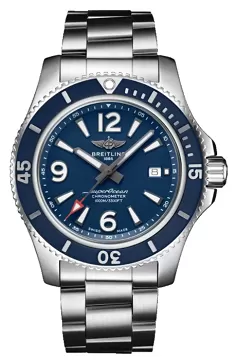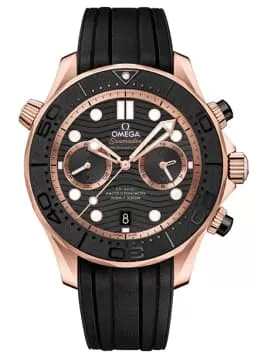It may seem obvious, but luminescent dials and bezels mean that your watch will work in the dark. This is an especially important feature for non-digital, traditional style watches, as it means they are valuable timekeepers at all hours – and in any location.
It seems simple enough but watch luminescence has had a remarkably interesting development history.
A Brief History of Luminescent Time…
Radium Lights the Way
Back in 1898, radium was discovered by the infamous Pierre and Marie Curie. Just over a decade later, Guido Panerai, a watch pioneer from Italy, patented the very first luminescent substance called ‘Radiomir’ in 1914, for use in watches. This material glowed from the radioactive decay of the material (radium bromide). A decay so slow, that essentially allows the material to glow forever.
This made it a highly effective method of lighting up dials on watches, applied as a luminous paint; however, little was understood about the health implications of radioactive materials at this time. The First World War expanded the popularity of wristwatches with radium luminescence as they were essential tools on the front lines.
Tritium and Tritium Gas
It later emerged that radium bromide posed health risks. Not so much to the wearer but, during the manufacturing process, it was documented that the brushes used to apply the radium luminescence were often moistened in the mouth to help with the paint application. This resulted in unfortunate consequences for many of the watchmaking staff.
This type of luminescence was banned in the 1960s and replaced with tritium luminescence. Tritium is a radioactive isotope of hydrogen which undergoes beta decay and emits electrons.
When these come into contact with a phosphor layer, luminescence is produced. This type of luminescence is still used to this day. Whilst it is a radioactive compound, beta decay is far less penetrating and easily contained within the watches.
The main downside to tritium gas is that the half-life of the beta decay is short when compared to radium bromide.
The lifespan of this type of luminescence is only 10 to 20 years depending on the concentration of tritium gas originally used and, even then, fading can be seen during that period.
Afterglow Pigments (Super-LumiNova)
In 1993, LumiNova pigments were invented by a Japanese limited company called Nemoto & Co. The brand, Super-LumiNova, is now widely recognised and used in luxury pieces, such as OMEGA watches. The material is a replacement for radioactive materials and uses strontium aluminate.
When exposed to sunlight, the material acts like a ‘light battery’ and, in darkness, can illuminate for prolonged periods. LumiNova is also incredible as the material does not degrade with time, meaning the cycle of charge and luminescence can go on and on, making it perfect for use in wristwatches.
A Spotlight on Banks Lyon’s Luminescent Watches
With watch luminescence being essential for those who need to tell the time in the pitch black, it is no surprise that our watch ranges with luminescence are geared towards the adventurous.
Breitling Superocean Watches
The watches in this collection were originally developed as a diving instrument for military divers. They are now popular amongst professionals and hobbyist divers and have become a statement timepiece worldwide. They have clear sapphire crystal watch crowns with stainless steel casebacks.
Breitling Superocean watches are water-resistant up to an incredible 1000m and have a helium escape valve for saturation divers. They have large numerals for ease of reading, especially underwater and in the dark. The luminescent dials and hands also help significantly in low light conditions. These are essential watches for active deep-sea divers.
You can purchase this Breitling Superocean Automation 44 watch for £3,350 or from £50.25 per month at 0% finance.


Omega Seamaster Watches
This collection provides you with everything you could need from a luxury watch. The Seamaster collection comprises of a long and diverse line of watches pre-dating the 1950s; the Seamaster Professional with its wave blue pattern is instantly recognisable.
The collection comprises of movement from self-winding automatic and C.O.S.C. chronometer to co-axial escapement which offers reduced wear.
Hollywood played a role in the success of these watches when, in 1995, Pierce Brosnan wore the Omega Seamaster Professional as James Bond in GoldenEye. The watches have a unique wave dial, offering a balance of sportiness and dressiness.
OMEGA Seamaster watches have a ceramic bezel (made from zirconium dioxide) which is scratch-resistant. The bezel is also 120 clicks and unidirectional. The face benefits from blue luminescent hour hands and markers and green luminescence for the minutes hand. Most of the watches in the Seamaster collection are water-resistant down to 300m, making them ideal for ocean divers.
Get this OMEGA Seamaster Diver Chronograph 300m 44mm watch for £24,460.
At Banks Lyon, we stock watches with a diverse range of features and characteristics that make them unique and perfect for all preferences and lifestyles.
We have a vast selection of luminescent pieces that are perfect for the modern lady or gent who are passionate about sports and the outdoors, so speak to us if you’d like more information about our watches – we’re happy to help you choose the right one for your or for a loved one with our personal shopper service!